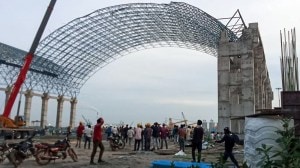Investigators sure JeM gunned for Gen
Building on clues from a cellphone data card, investigators probing last month’s attempted assassinations on Pakistan President Pervez ...

Building on clues from a cellphone data card, investigators probing last month’s attempted assassinations on Pakistan President Pervez Musharraf, say they are convinced that the bombings were partly orchestrated by militants associated with the radical Muslim group Jaish-e-Mohammed, a one-time ally of Pakistan’s security services with links to Al Qaeda.
Call records from the chip, found among the debris after two men detonated truck bombs near Musharraf’s armoured limousine on Christmas, have helped lead to the detention of 40 people, including members of JeM and a like-minded group, Lashkar-e-Jhangvi, said Pakistani security officials.
The danger posed by militants is considered so serious that those in charge of Musharraf’s security barred soldiers and police assigned to guard the presidential motorcade from carrying cellphones out of concern that they might be used to coordinate another assassination bid, officials said.
In a similar vein, Musharraf has told associates that he is reluctantly considering a move into the official President’s residence in Islamabad, which would reduce the amount of time he spends travelling on public roads. He currently lives with his wife in Rawalpindi. Investigators said the December 14 attack on Musharraf, in which a bridge in Rawalpindi was blown up, generated few clues. The charge detonated moments after Musharraf’s motorcade had passed over the bridge, apparently delayed by electronic jamming devices that interfered with the remote control device used to set it off.
The second attack involved suicide bombers driving Suzuki pickup trucks packed with explosives. The assailants’ remains have yielded an abundance of evidence that has produced a clearer though incomplete picture of the terrorist cell they believe was behind both attempts. One bomber, officials said, was carrying an identity card that allowed investigators to piece together his history as a native of the Pakistani-held part of Kashmir who was once associated with the Harkat Ul-Ansar and later with a faction of JeM. The same man, officials said, had received training in Afghanistan in the 1990s and later joined thousands of other Pakistanis who rushed to the aid of the Taliban against US forces in 2001.
The second bomber has not been identified, but the remains of his face has led investigators to believe he may have been an Afghan or Arab, suggesting a Qaeda link, officials said. — (LAT-WP)



- 01
- 02
- 03
- 04
- 05




























